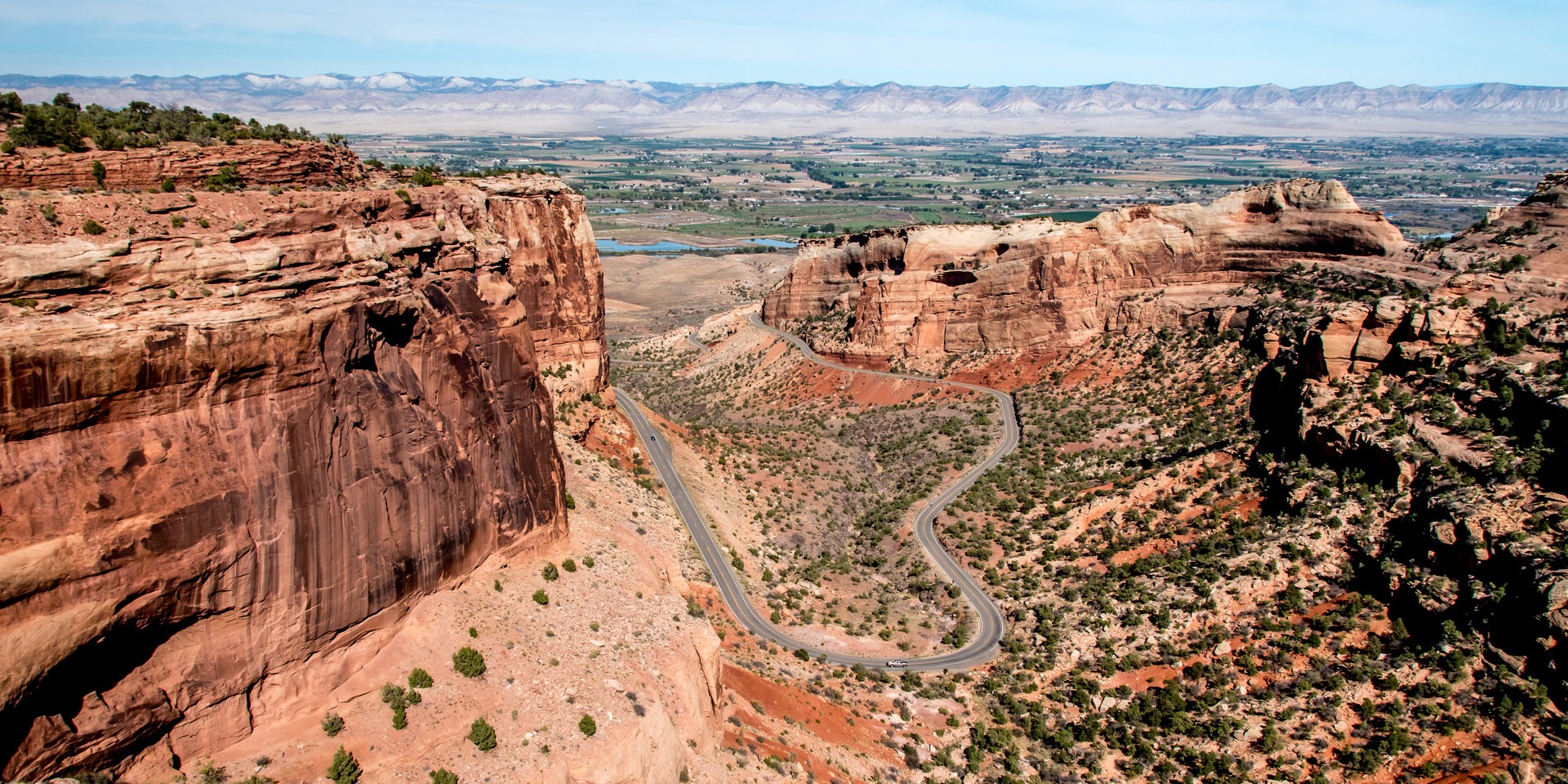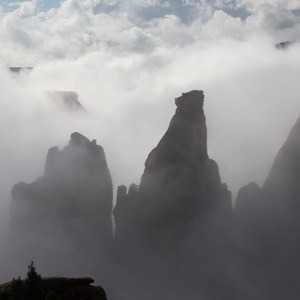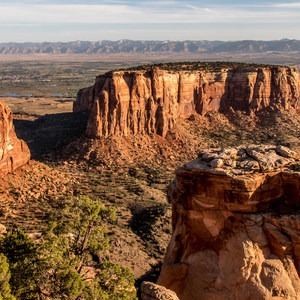1,000 miles away from John Muir's conservation efforts in Yosemite National Park, a contemporary of his, John Otto, was working in the Grand Junction area to protect another natural wonder: the canyons of the Colorado River in western Colorado. Otto had moved to the Grand Junction area in 1906 and quickly fell in love with the canyons and plateaus to the south of the town. He personally built several trails and brought many visitors to the area, eventually succeeding when President Taft designated it a national monument in 1911. John Otto was named the first park ranger for the monument.
Today, the park is a very accessible natural area that can occupy a day or less to explore, but it also offers many trails for those with several days to spend. Rimrock Drive is the primary road through the park, and this drive and the several overlooks along its 23-mile length should be the starting point for exploration. Starting at the west entrance, the park road quickly climbs up through Fruita Canyon, passing Balanced Rock and going through two tunnels to reach the plateau. A stop at the visitor center provides some background on the park's environment, geology, and history. The Canyon Rim Trail and the Window Rock Trail are both short and offer great views, with Window Rock being a terrific sunrise spot.
Leaving the visitor center, the road passes eleven more named overlooks, each of which is worth a stop. Grand View and Monument Canyon View overlook Monument Canyon and Independence Monument, some of the most striking scenery in the park. Ute Canyon, Red Canyon, and Cold Shivers offer great perspectives on side canyons that stretch north and east toward the Grand Valley. Allow at least two to three hours to make this scenic drive and allow for enough time to wonder at the views.
For those with the time and energy to explore the monument in more depth, there are several short and long trails into the back country. Ute Canyon Trail, Liberty Cap Trail, Black Ridge Trail and Monument Canyon Trail are the longest trails at 5 to 6 miles one-way. If there is only time for one long hike, consider doing Monument Canyon. There are great short trails too, like Devils Kitchen, Serpents Trail, Echo Canyon, and the Ute Canyon Interpretive Trail. Bicycles are not allowed on the trails in the monument, but the Rimrock Drive plus connecting roads outside the park form a 33-mile road bike loop with 2,300 feet of elevation gain. Mountain Bikers will enjoy the plethora of Fruita and Grand Junction options nearby.
For campers, there are a few options. Saddlehorn Campground, located near the visitor center, has camping for tents and RVs, though low tunnels at either park entrance make RV access difficult. Backcountry camping is allowed with a permit, but there is no water in the park, so bring a good supply along. Finally, there is a great state park just minutes outside the western park boundary in Fruita, the James Robb Colorado River State Park. This campground is spacious and well-maintained with excellent sites for tenters or RVs.










Comments
Sign In and share them.